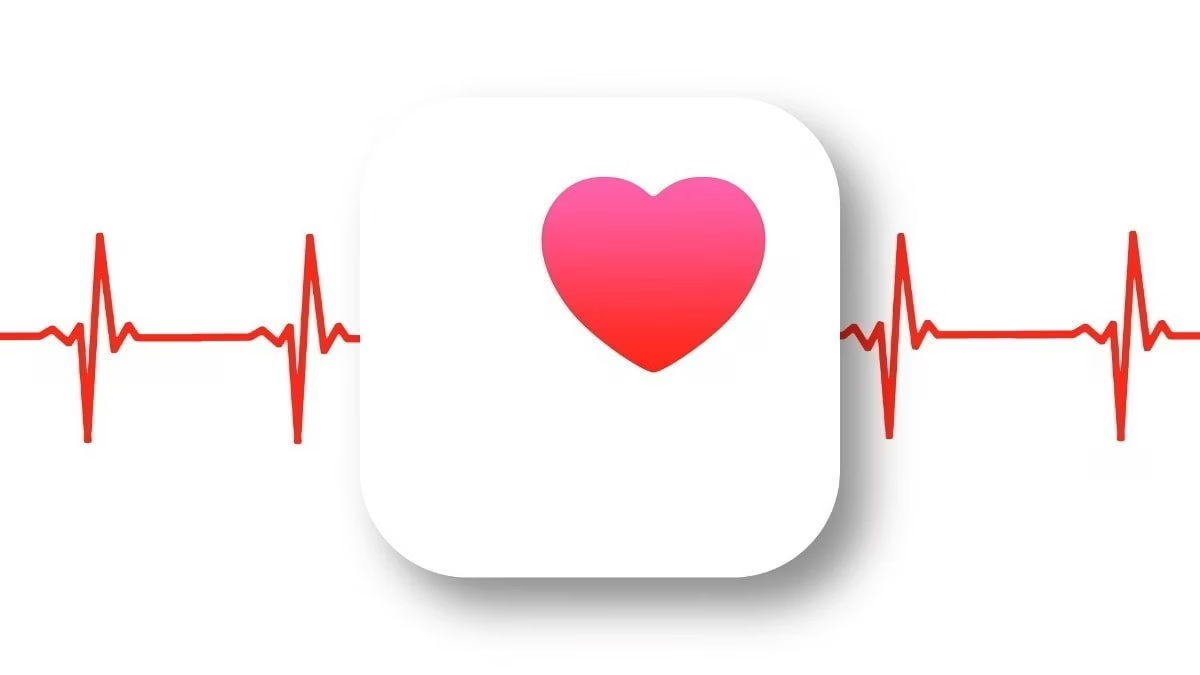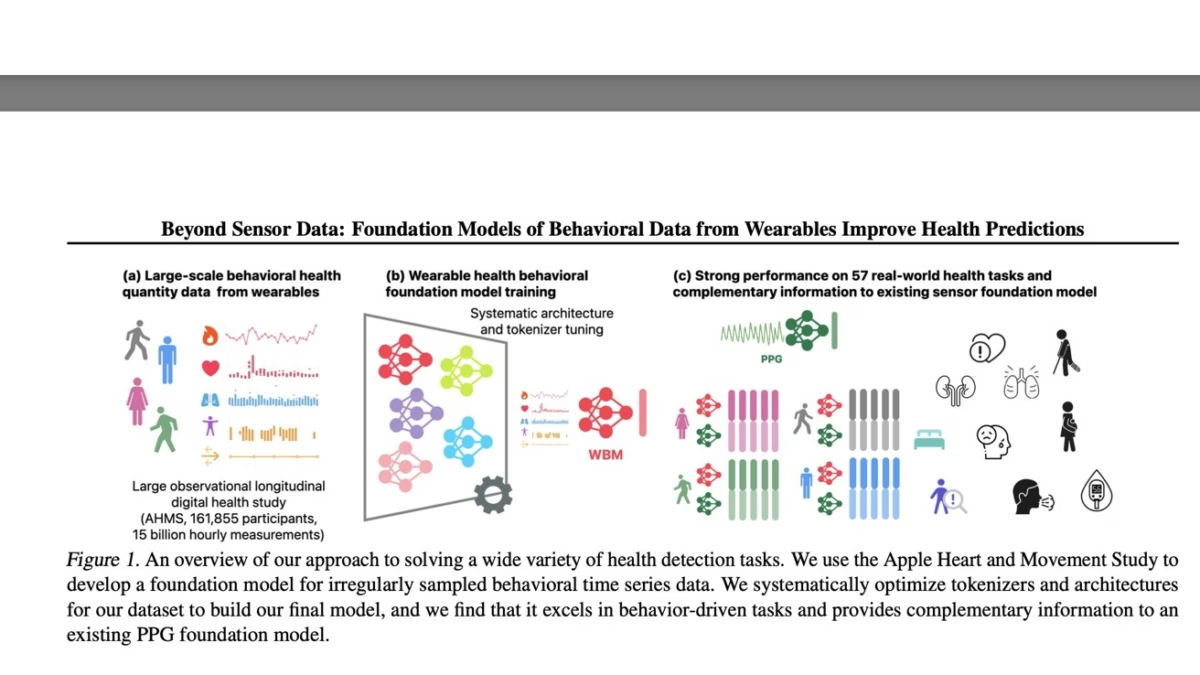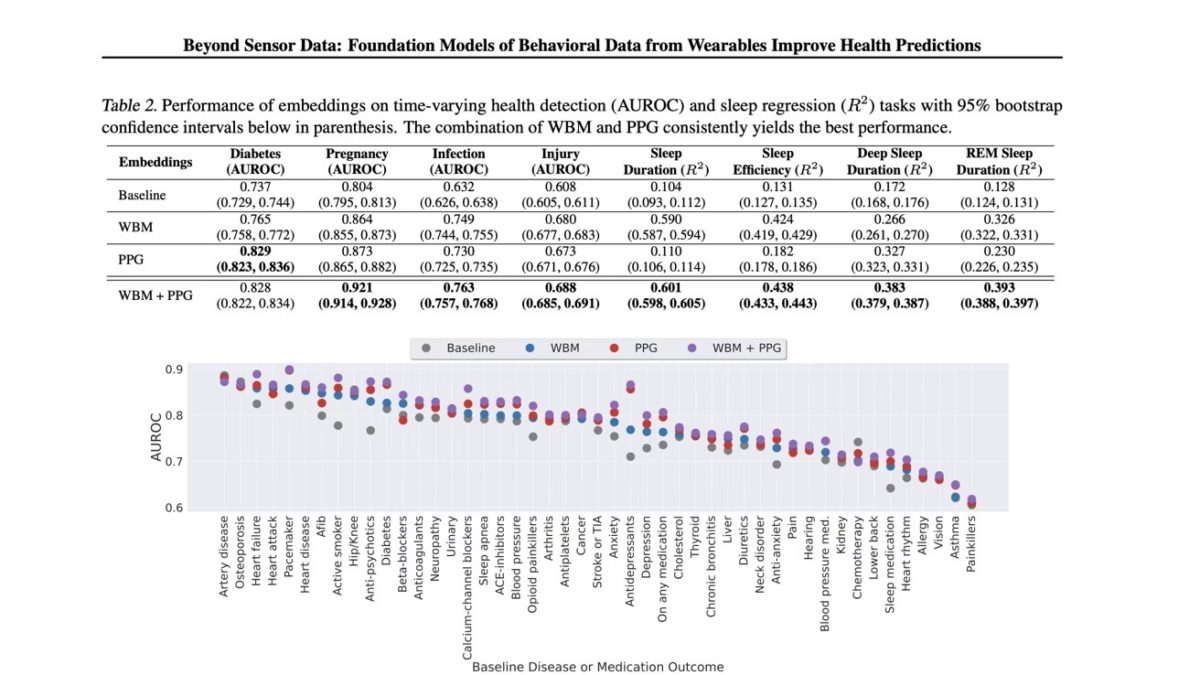Apple and scientists have created an AI model to accurately predict health from Apple Watch data

Researchers backed by Apple have developed a new artificial intelligence model that uses behavioral data from the Apple Watch to more accurately determine a person’s health status. According to the research paper, this information is more informative than raw data collected by sensors in real time.
According to the research paper, this information is more accurate than raw data collected by sensors in real time.
The model is based on data from the Heart and Movement Study
The new work builds on years of research from the Heart and Movement Study, an Apple initiative to promote healthy physical activity and improve cardiovascular health. The study utilized data from 162,000 users collected through more than 15 billion measurements per hour.
The study uses data from 162,000 users, collected through more than 15 billion measurements per hour.

Scientists have created what they call a “baseline behavioral health model for wearable devices” (WBM). Unlike the traditional sensor-based approach, the WBM uses 27 aggregate metrics calculated from raw data using validated techniques. These include exercise time, standing duration, blood saturation, heart rate, and other metrics available through Apple HealthKit.
These metrics include exercise time, standing duration, blood saturation, heart rate, and other metrics available through Apple HealthKit.
WBM is more effective than traditional methods in most tasks
The authors emphasize that such behavioral data more accurately reflect both stable and short-term health conditions. For example, smoking, hypertension, or taking beta-blockers are among the static attributes, whereas pregnancy is among the temporary ones. Raw sensory data are captured over seconds of time, while behaviors reflect changes over a longer time horizon.
In tests, the WBM showed better accuracy than the photoplethysmography-based model (PPG) on 42 out of 47 tasks. The model was especially superior to PPG in predicting conditions like pregnancy or beta-blocker use, thanks to its ability to capture long-term changes in heart rate.
But in tasks where physiology is crucial (such as diagnosing diabetes), PPG remained more effective. This prompted the researchers to combine the two approaches – a behavioral model and a sensor-based model.
At the same time, PPG remained more effective in tasks where physiology is crucial (e.g., diabetes diagnosis).

The hybrid approach showed the best results
The combined PPG + WBM model achieved the highest accuracy for most tasks. For example, it outperformed both baseline models in age determination. The hybrid was particularly useful for determining temporal states, where both physiological data and behavioral patterns are needed.
The researchers conclude that combining both types of data maximizes the impact, especially when one of the models is insufficient to make confident predictions. This paves the way for Apple’s future health solutions – with possible integration of hybrid AI models into Apple Watch and related services.
The researchers conclude that the combination of both types of data maximizes the impact, especially when one model is insufficient to predict confidently.
The article Apple and scientists create AI model to accurately predict health from Apple Watch data was first published on ITZine.ru.








